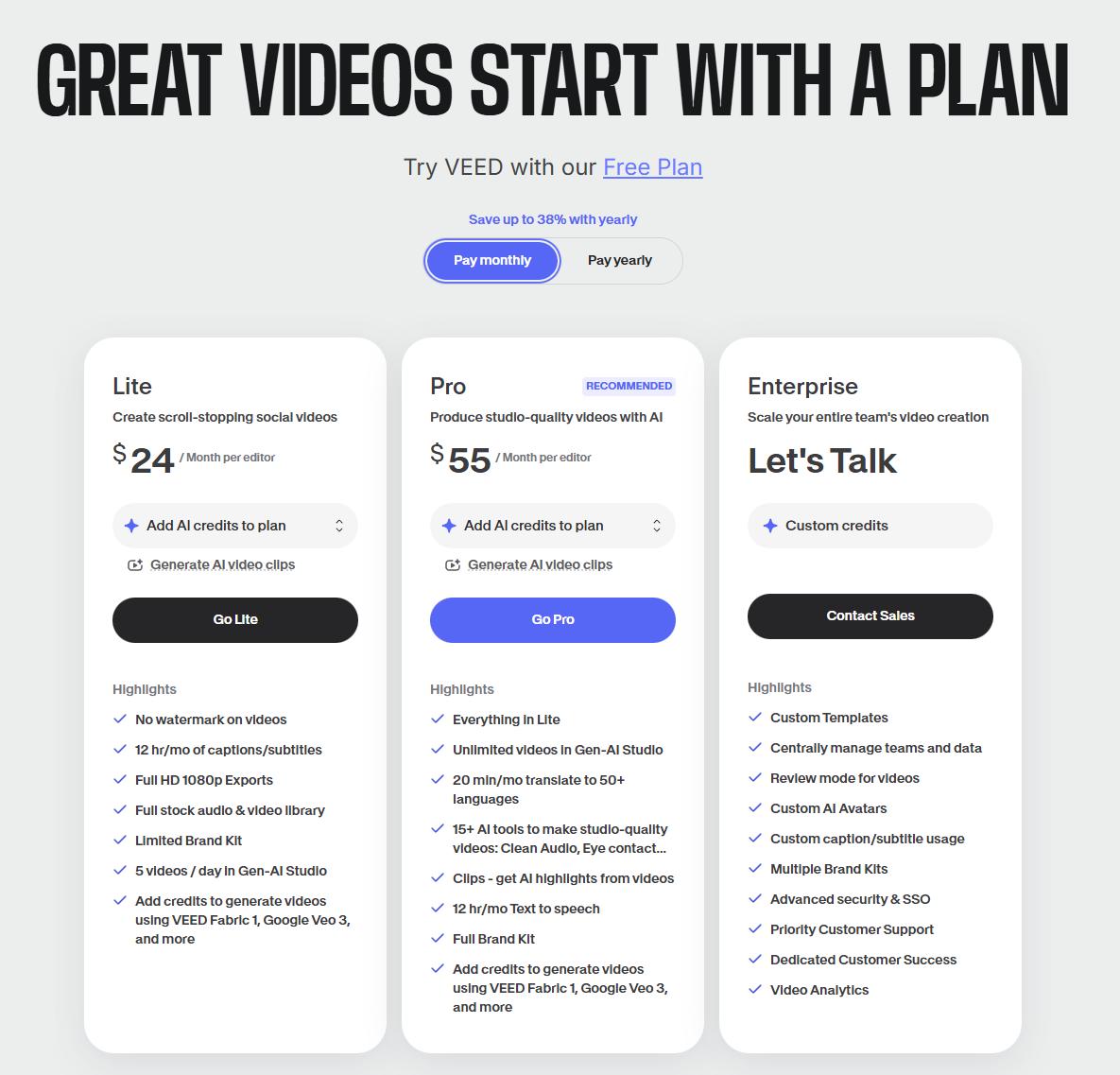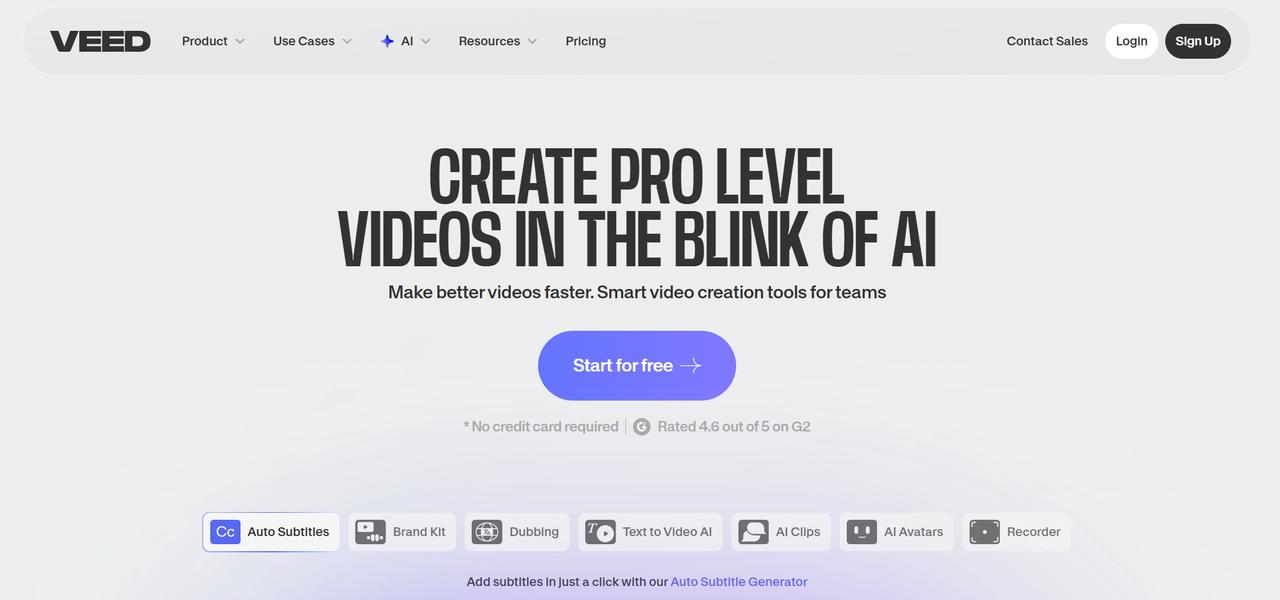Veed.io Review: How Well Does It Handle Short-Form Content In 2025?

Short-form video still rules social feeds in 2025. Platforms reward attention, not length — vertical 9:16 clips, punchy hooks, and tight captions win. That puts pressure on creators and small teams to iterate quickly: fewer shoots, more edits, and faster experiments. Tools that turn a single product photo into a ten-second promo — and then let you polish, caption and export in minutes — are exactly the kind of time-savers people need.
In this review I take Veed through a practical, hands-on workflow: generate a short product promo from one image using Veed’s image→video models, import the best output into the editor, and push it to a publishable vertical clip. I’ll cover quality, speed, UX, and whether Veed is genuinely useful for creators who prioritize speed and iteration over frame-perfect control.
TL;DR
Veed in 2025 is a strong option for fast social clips: the image→video AI produces usable, attention-grabbing motion from a single photo and the editor’s AI tools (auto-subtitles, Magic Cut, filler removal) speed the push to publish. If you need pixel-perfect effects or frame-accurate control, a traditional NLE still wins — but for marketing teasers and quick reels, Veed is excellent.
What is Veed? Quick overview
Veed is a browser-based video editor with a heavy focus on accessibility and AI features. Think of it as an all-in-one space: image→video generation (multiple models), classic timeline editing, auto-subtitles, Magic Cut and other “make it fast” tools, plus mobile apps and a built-in stock library. It has collaboration features for teams and a free tier for testing; upgrading (Pro) removes watermarks, raises export limits and unlocks more advanced AI options. In short: it’s pitched at creators, marketers, and small teams who want one tool to generate, edit, caption, and export social clips.
Key features that matter for short-form content
| Feature | Why it matters for short-form |
|---|---|
| Image → Video (AI Image Animator) | Turn a static photo into motion — perfect when you don’t have footage. Multiple models let you compare realism vs stylization. |
| Magic Cut | Auto-trims longer clips into short, punchy segments — saves manual chopping for Reels/Shorts. |
| Auto-subtitles + caption styling | Captions turn on views — Veed auto-generates and gives quick styling presets for social. |
| Filler-word removal & audio cleanup | Quickly tightens voiceovers so your 10s hook isn’t full of “um”s. |
| Aspect ratio presets & export templates | One-click 9:16, TikTok, Instagram Reels, YouTube Shorts exports with correct codecs and sizing. |
| Model comparison UI | Generate multiple variations from one prompt and pick the best — efficient for iteration. |
How I tested Veed
Project brief: Create a 10-second product promo Reel from a single product image — ideal when you can’t shoot video but need something that looks dynamic.
Step-by-step (this is screenshot-friendly):
Open Veed → AI Playground and choose Generate a video with an image and a prompt.
Set aspect ratio to 9:16 before you upload — this prevents awkward cropping later.
Upload a single clean perfume photo (neutral background, good lighting).
Paste these prompt templates and generate:
- “Slow 3D pan-right across the bottle, soft camera shake, warm backlight bloom at 1.5s, subtle bokeh background, fade-in logo at 8s.”
Results — quality, speed, and polish
Image→video quality: It produced usable motion, but with tradeoffs. It gave smooth parallax and realistic camera moves — great for lifestyle/product shots — but occasionally softened fine product details (edges, labels).
Speed & workflow: From upload → final 8s export, the fastest run took under 10 minutes (generate → refine → auto-subtitle → export). If you want iterations (try 2–3 prompts, compare models, tweak captions), expect ~20–30 minutes. That’s dramatically faster than organizing a shoot. AI features like auto-subtitles and filler removal saved several editing steps — Magic Cut in particular was a time-saver for making punchy versions for Stories.
Export & sharing: Veed’s presets made exporting to TikTok/Reels/Shorts almost frictionless. Exports included correct codec/container defaults and offered simple hosting/embed options. Watermarks appear on free tier exports (expected); Pro removes them and raises resolution limits.
Limitations & when to use
Where Veed shines: fast marketing clips, product teasers, and social assets when you can’t shoot or want quick A/B tests. It’s excellent for creators who value iteration speed over micro-control.
Drawbacks: generated motion isn't always perfect — expect occasional artifacts around complex textures (glass, hair, fine text). Also, several advanced AI features and higher export limits are behind the Pro paywall; free tier is useful for testing but has watermarks and caps.
Pricing & Who Should Buy
Veed keeps its pricing refreshingly simple in 2025, with three main tiers designed for creators, pros, and teams:
| Plan | Monthly Price (per editor) | Key Highlights |
|---|---|---|
| Lite | $24/month | No watermarks, Full HD exports, 12 hr/mo of captions, access to stock video/audio, and limited AI credits for generating short clips. Great for solo creators making Reels or TikToks. |
| Pro (Recommended) | $55/month | Everything in Lite plus unlimited Gen-AI Studio access, 15+ AI tools (Clean Audio, Eye Contact, Auto Cut), 20 min/mo translation to 50+ languages, 12 hr/mo text-to-speech, and full brand kit. Best value for marketers and content teams producing social promos at scale. |
| Enterprise | Custom pricing | Built for teams who need shared templates, centralized asset management, review workflows, multiple brand kits, and dedicated support. Ideal for agencies or large social media departments. |
All plans let you add AI generation credits for creating videos with Veed’s advanced models (Veed Fabric 1, Google Veo 3, etc.). You can start with the Free Plan to test features, then upgrade once you’re ready to export watermark-free content in full HD.

Conclusion & final recommendation
If your goal in 2025 is to convert static assets into eye-catching social clips quickly, Veed is one of the more polished browser solutions available. Its image→video models produce good, social-ready motion, and the editor’s AI tools remove boring manual steps (subtitles, trimming, filler removal). For marketing teams and creators who prioritize speed, A/B testing, and iteration, Veed is a solid pick — just don’t expect it to fully replace a high-end NLE for complex VFX work.
Try this: upload one product photo, run two models with the prompts above, and see which version converts better in your first A/B test — it’s a fast way to evaluate value without booking a shoot.
Final verdict: Veed in 2025 is a pragmatic, beginner-friendly toolkit for turning images into short, publishable social clips — fast enough to be part of a real content workflow, but not a total replacement for professional video production.
P.S. If you’re into creative AI tools beyond video, check out Lovart — a new platform for generating unique visual assets that pair beautifully with Veed-made clips.


Поделиться статьей

